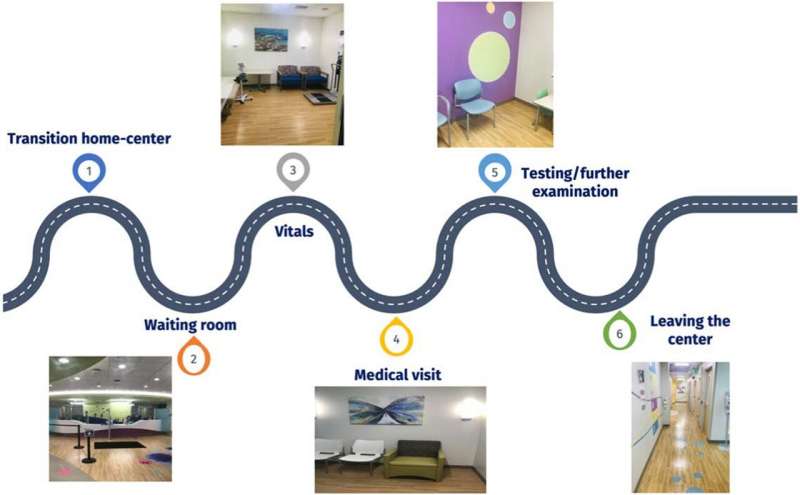This article has been reviewed according to Science X's editorial process and policies. Editors have highlighted the following attributes while ensuring the content's credibility:
fact-checked
trusted source
proofread
Researchers report on designing autism-inclusive health care environments

Autism is the most common neurodevelopmental disorder in the U.S., affecting an estimated one out of 36 children. Most people with autism experience unique sensory features such as differences in reactivity to touch, sounds, and sights or difficulty managing multiple sensory inputs at the same time.
These sensory differences can make the health care environment—often characterized by fluorescent lights, idle waiting rooms and uncomfortable pokes and prods—difficult to navigate, preventing children with autism from getting the care they need. To change that, occupational therapists Roseann Schaaf, Ph.D., and Lady Rios-Vega, OTD, are working with Dr. J. Matthew Fields to design more inclusive health care environments for autistic children, as outlined in a new study in the journal Discover Psychology.
Using the creative problem-solving framework of design thinking, Drs. Rios-Vega, Fields and Schaaf analyzed health care environments and met with parents of autistic children, health care professionals and designers to collaboratively brainstorm how the experience could be improved.
They emerged with new ways to make health care environments more friendly for autistic children with sensory differences. One is to include a "sensory adaptive environment," an area near the waiting room with varied sensory zones, with features like rocking chairs and activities for children who need more sensory stimulation, and features like bean bags and weighted blankets for children who need to relax.
Drs. Schaaf and Rios-Vega also identified the need for increased training of medical professionals about sensory differences, and they recommended developing adaptations for medical procedures like vital signs measurement, such as having a family member model the procedure first.
"This project is one step closer to helping children with autism participate in health care more comfortably, more successfully," says Dr. Schaaf.
As a continuing collaboration with the Jefferson Autism Center of Excellence, the researchers are also working on studies focusing on the barriers to service access for Black, Hispanic, and Latino autistic children and their families, engagement of minoritized communities in research and culturally sensitive interventions.
More information: Lady Rios-Vega et al, Designing sensory adaptive environments to enhance participation in healthcare for autistic children, Discover Psychology (2024). DOI: 10.1007/s44202-024-00118-5





















